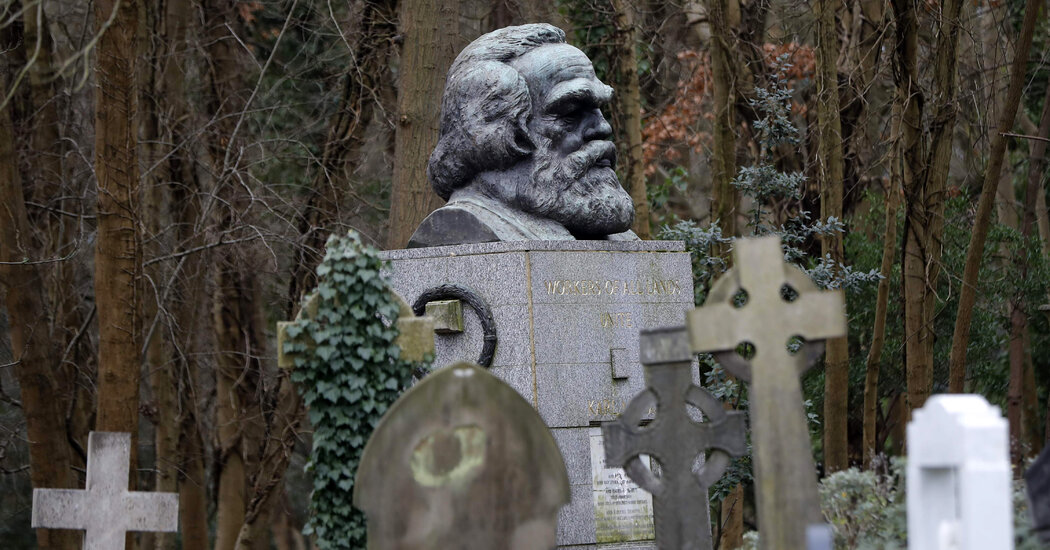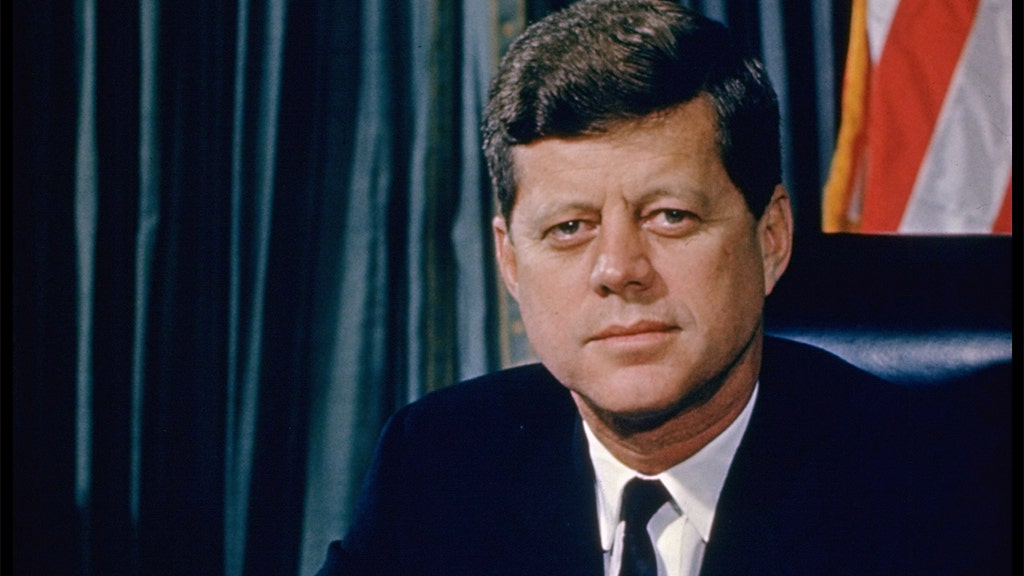In death, as in life, it is expensive to have famous people as your neighbors.
There is hardly any space left at Highgate Cemetery, a Victorian graveyard in north London where Karl Marx, George Michael and George Eliot are buried, along with 170,000 other Londoners. The price of a grave to rest in esteemed peace? It starts at 25,000 British pounds, or $31,700.
That cost gained attention in British media this week, after the historic site notified the public it had begun a process of adding new gravesites.
Many pointed out the capitalist irony of such a high price tag, suggesting that the large fee for a plot near Karl Marx would make the so-called father of communism “turn in his grave.” Marx’s tomb is a major draw for the cemetery, and visitors pay 10 pounds, or about $12, to explore the grounds.
“Cemeteries are quite expensive places to maintain,” said Ian Dungavell, the chief executive of the charity that manages Highgate Cemetery, adding that dwindling space on the property contributed in part to the high cost of being buried there. “We’re still dealing with a very limited resource.”
(There was “no uplift,” he said, for being in Marx’s vicinity. “That’s just the price.”)
But the group’s seemingly capitalist approach is part of an existential problem that other cemeteries, in Britain and elsewhere, are also facing: How does a burial ground continue operating if it is running out of space?
‘We have a massive burial space problem.’
Cremations are popular in much of Britain, according to surveys from the Cremation Society that suggest more than 70 percent of the deceased have opted for that method in the past two decades. In comparison, about 59 percent of the deceased in the U.S. were cremated in 2022.
But even with a high cremation rate, Britain is facing a shortage of graves in many areas. In some burial grounds in London, experts say, there is already no more room, and other cities are not far behind.
“Crisis is an appropriate word,” said Helen Frisby, a historian and research fellow at the University of Bath. “We have a massive burial space problem.”
Law bodies are reviewing current regulations around burials, but the addition of new plots at Highgate Cemetery would make it one of a few London burial authorities that can reuse graves. That practice might help graveyards survive, experts say, while challenging the idea of “burial in perpetuity.” European countries have adapted the short-term leasing of plots or recycling graves to deal with crowding.
Legislation in 2022 gave Highgate Cemetery the power to take back old and unused graves, a process that it has optimistically termed “grave renewal.” Empty graves and graves where burials took place more than 75 years ago can legally be repurposed.
The proposal will, for the moment, only affect about 500 graves in the cemetery, Dr. Dungavell said. Some grave owners were last registered in the 1870s. Others were simply too hard to trace, and the cemetery has spread the word by posting public notices about plots set to be repurposed. Owners of those graves will have until July to object to their reuse.
For graves without objections, the existing remains will be interred deeper into the same spot, and new burials will take place on top of them.
The idea is contentious, which was evident on a visit to the cemetery this week. Even on a chilly day, visitors were weaving through tree-lined pathways to take in epitaphs from artists, philosophers and beloved residents.
“To me, it’s kind of sacrosanct,” said Thomas Swinburne, 57, who was visiting London from the northeast of England. “The body’s at rest. I wouldn’t want any of my family members disturbed in that way.”
‘I wouldn’t want to clog the place up.’
Highgate, built in 1839 on the city’s outskirts, is part of a group of Victorian graveyards known as the “Magnificent Seven.” As London’s population boomed, the private cemeteries were designed to solve overcrowding in existing churchyards.
Now it is close to full itself. Dr. Dungavell said his team had scoured the cemetery’s maps for any gaps. In the past, they had mounded earth on top of existing graves to create new burial sites, or narrowed existing paths to create more cremation spots. (Those start at 5,000 pounds, or $6,300.) “I wouldn’t want to clog the place up any further,” he said.
Other ideas he is exploring include shared vaults for those who are cremated. The group is also relying on funding to help maintain the nature at its site and make it more accessible for visitors.
But despite all the efforts, the price tag for burial is still high.
“It is ironic that these highly expensive graves are located close to one of our most strident critics of capitalism,” said Julie Rugg, a researcher in social policy at the University of York. But, she said, the new system was a pragmatic response to the need to protect the site, and that the money would contribute to its management.
Dr. Frisby said that the cost for a grave in Highgate Cemetery was not typical for Britain, and that graves usually cost thousands of pounds, rather than tens of thousands. But there was a “social cachet” to being buried in such a historical ground, she said.
“It is a very prestigious cemetery. It is able to command those fees,” she said. “Most cemeteries can’t.”
Some visitors to Highgate said it was time to consider different ways of putting loved ones to rest.
“If you run out of space, you have to think about new ways,” said Marlis Graf, 34, a tourist from Germany who was visiting the grave of Karl Marx. “I’m actually a fan of eco-burials, where we don’t have any gravestones or something at all. Just trees.”
The decision to recycle a grave is ultimately a personal one, said Mackenzie Parker, 31, who was admiring headstones with a friend. Her family is Roman Catholic, and Ms. Parker said she would have objected to her relative’s grave being recycled for religious reasons.
But the request wouldn’t have offended her, she said — the more options the cemetery offered for people to share its history, the better: “Their families can know that they’re in such a beautiful, ancient and protected place.”




